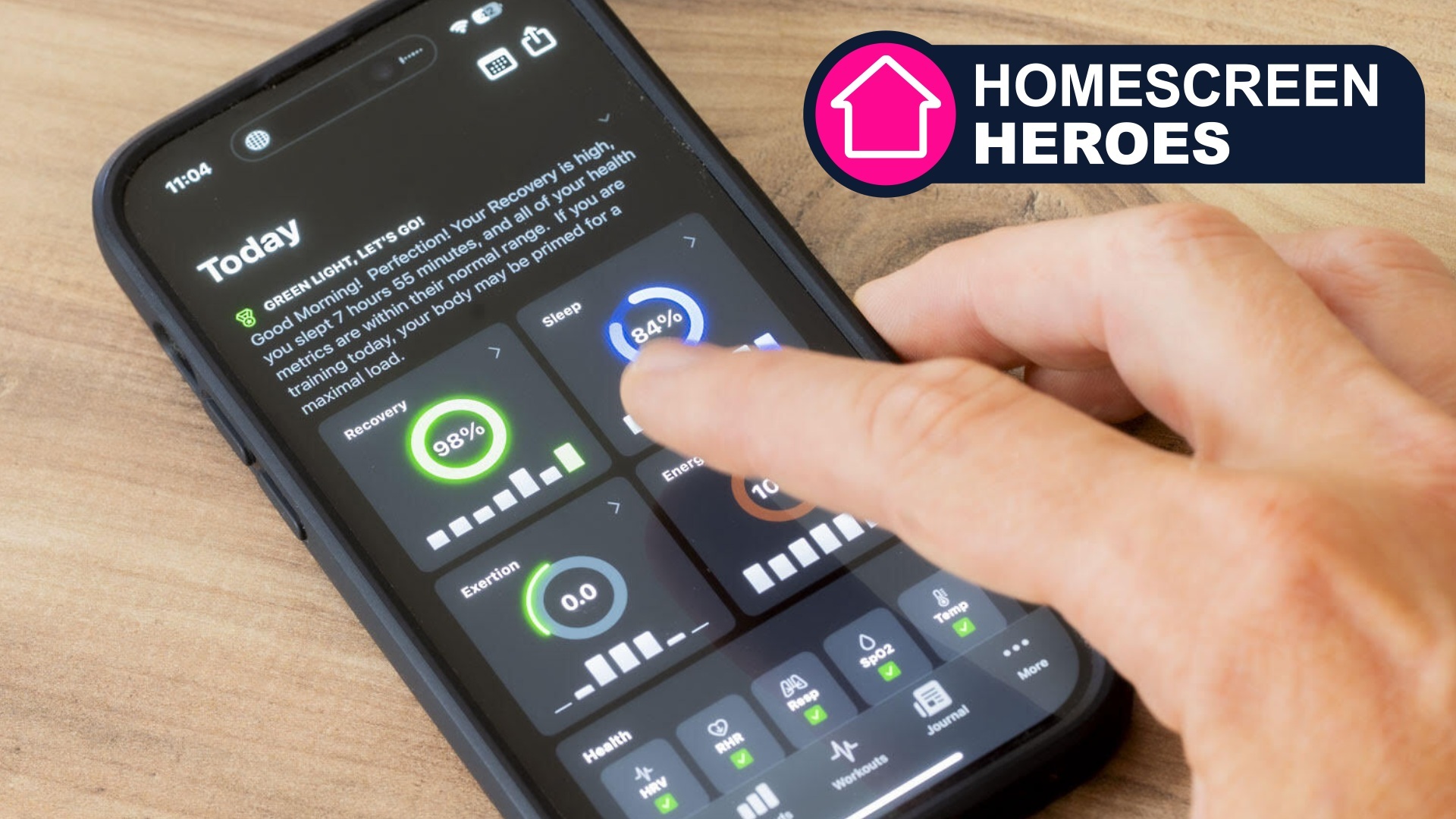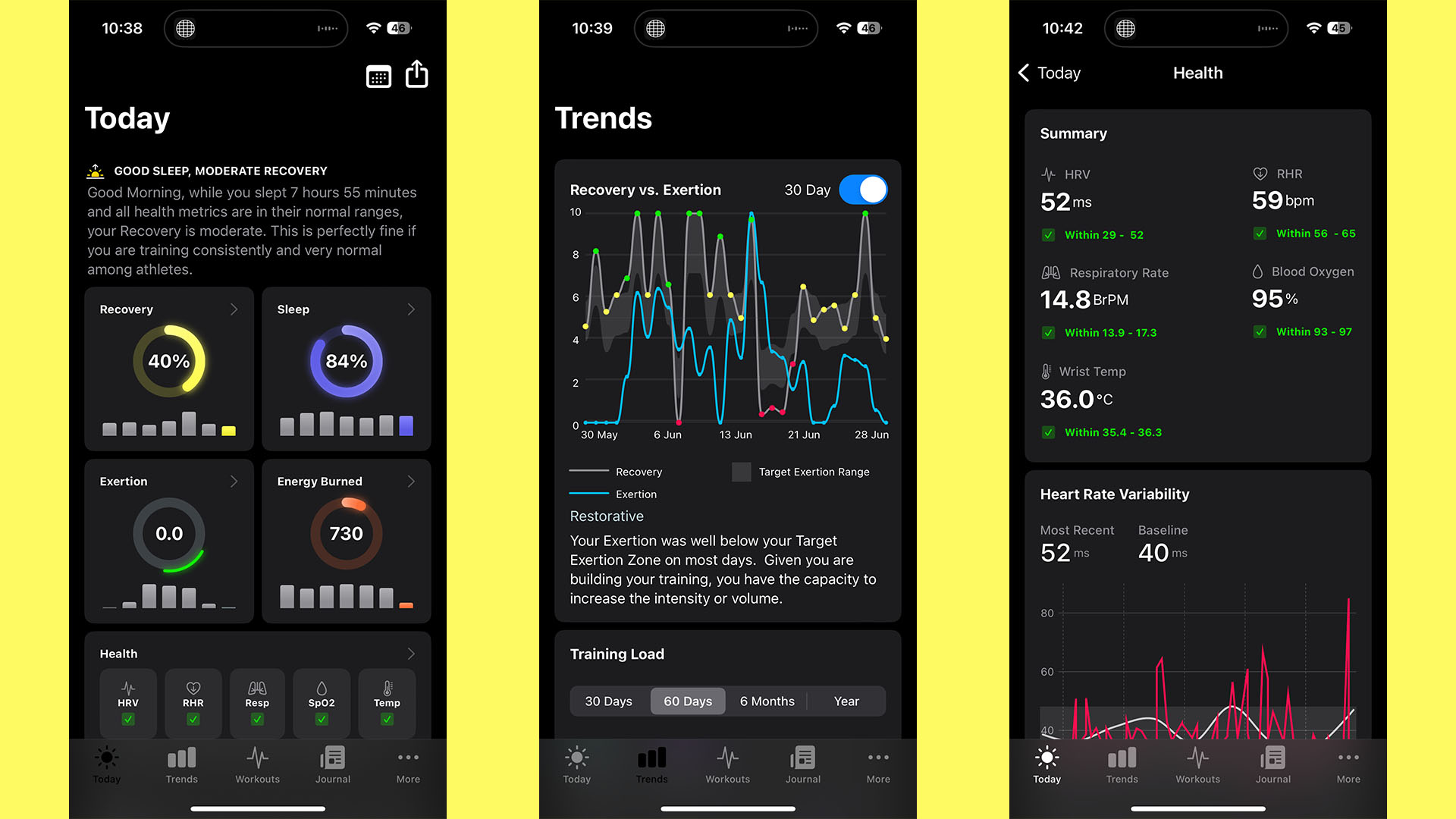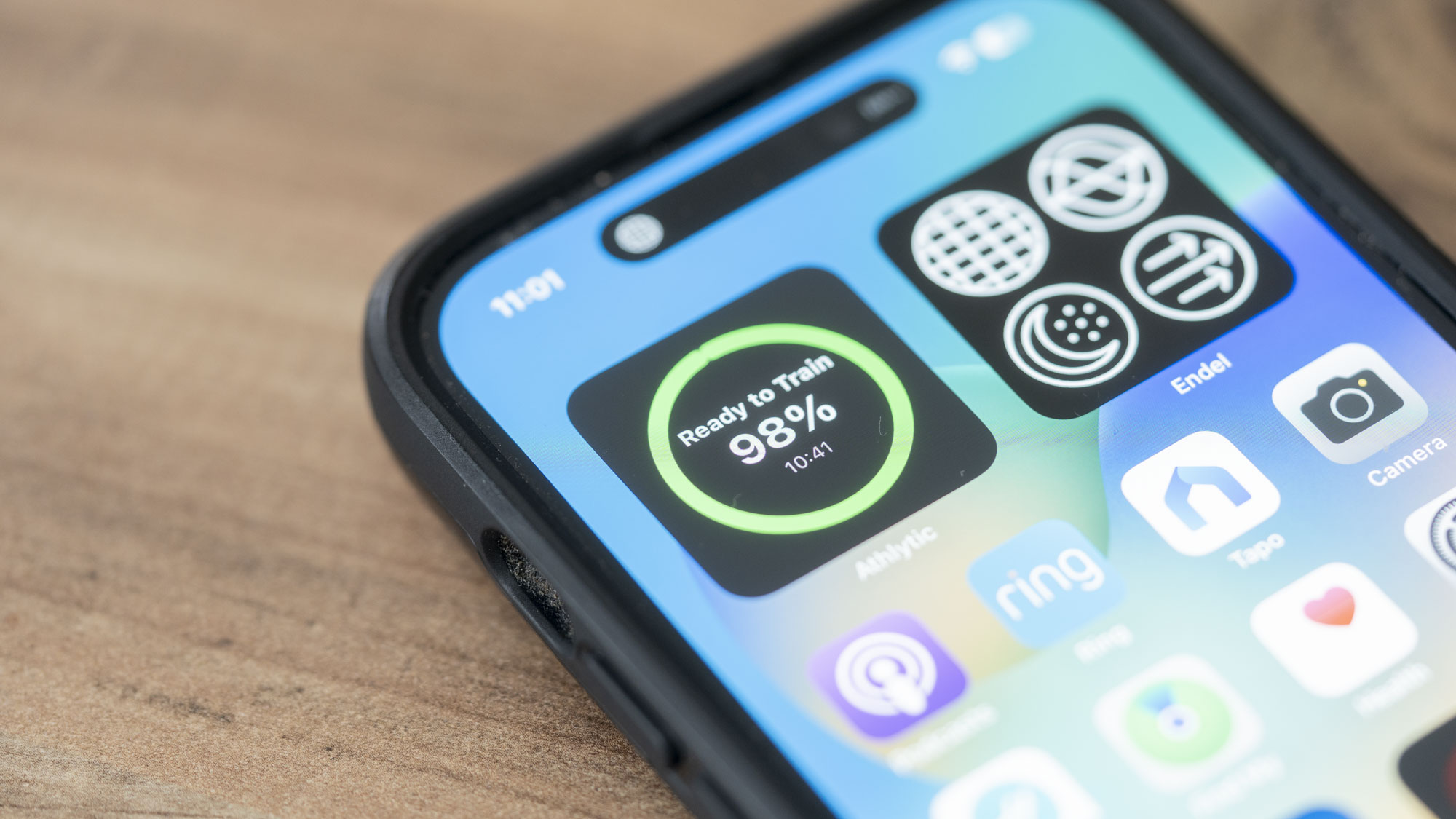This app turns my Apple Watch into a Whoop band
Homescreen heroes: Athlytic gives you all those recovery and sleep scores that Apple have been holding back

Apple's philosophy is to lag behind the competition when it comes to implementing features. They observe and refine before releasing the perfect iteration of their hardware or software like it is their own brand-new technology.
Apple Health, the Apple Watch, and all the associated metrics are great, but why doesn't Apple have an app that gives you a Readiness, Recovery, or Sleep score? The Oura Ring and Whoop products have these features, as do many of the Best Fitness Trackers, so why can't my Apple Watch tell me if I should spend the day in bed or run 100 miles?
In fact, Apple has announced that it will introduce some of these features in watchOS 11, but that hasn't helped me while I have been training for and recovering from a 70-mile ultramarathon, so I found an alternative.
This is part of a regular series of articles exploring the apps that we couldn't live without. Read them all here.
I stumbled across Athlytic late one night. The simple-to-use app basically gives you the same information as those other fitness trackers by reading your Heart Rate Variability, Resting Heart Rate, Sleep, Respiratory Rate, Wrist Temperature, and Blood Oxygen levels. It then combines these vitals with your exercise data to calculate how much you should be doing in the day ahead.
When I wake, I can roll over in bed and jump straight into the Athlytic homescreen. I'm greeted with a written summary for the day ahead, putting all the stats into words. This text updates throughout the day, letting you know how you are getting on and whether you still have the capacity for more exercise or whether it's time for rest and recovery.
Panels show your Recovery and Sleep scores as a percentage out of 100. Then there is the 'Calories Burnt' panel. Finally, and most importantly, is the Exertion panel, which advises how much exercise you should do and has an Apple-esque ring slider showing how much exertion you have achieved.
For example, the app may suggest that I've had a good sleep, so I have room to reach between 5 and 7 Exertion. Then, after a gentle jog, I'm now on a rating of 2, giving me plenty of capacity to still do a hard workout later in the day.
Get daily insight, inspiration and deals in your inbox
Sign up for breaking news, reviews, opinion, top tech deals, and more.

Training Goals
The real magic happens when you tell Athlytic your current training goal. You can choose from Peak Training, Building, Tapering, and Injured or Resting. I have been injured or resting since running 70 miles in one day and obliterating my knees.
This training goal is how Athlytic produces your Target Exertion Range. You can see it in action on the Trends graph, which shows a daily line graph of your Recovery and Exertion and plots a Target Exertion Range. Stick within the Target Exertion Range, and you should be on track with your Training Goal. Currently, I am rapidly losing fitness by setting the Injured or Resting Training Goal, but in the long term, I am saving my body (mainly my knees) to fight another day.
One of the more interesting aspects is the Journal section of the app. Every day, you can look back at the day before and add tags to help describe some of the things that may have influenced your training and recovery. The tags are pretty comprehensive and include things like Alcohol, Caffeine, Creatine, Fasting, Late Meals, Warm Bedroom, Travel, Job Stress, Sauna, etc. By clicking on a few of these supplements or lifestyle factors, Athlytic can start to calculate how much of an influence each one has on your recovery and fitness and allocate it a score.
It takes time to build meaningful correlations, and most of them are pretty logical. For example, even light alcohol consumption impacts my recovery by about 20%, magnesium supplementation helps my recovery by 18% while spending 2+ hours a day in sunlight aids my recovery by about 4%.

Do I Really Need This Much Information?!
No, probably not. It is all as simple as listening to your body and having common sense. Did you run a half marathon yesterday at a fast pace? Then it's probably best to take it easy today. Did you go out with your friends until 2 am and need help remembering much past midnight? Again, it's probably wise to spend the day binge-watching the best of this month's Netflix on the sofa. However, for those serious about improving their health and fitness or training for a specific event, knowing the details of what your body is up to is incredible.
For two days after my ultramarathon, my resting heart rate was still elevated compared to normal, as was my wrist temperature, whilst my heart rate variability was low.
These were all signs that my body was using a lot of its resources recovering, but with all that said, my knees were also transmitting similar information directly to my brain in the form of shearing pain.
Athlytic is available on iOS with a monthly subscription cost of US $3.99/AUS $5.49/£3.49 or US $29.99/AUS $45.99/£26.99 a year.
A 7-day free trial is available.
You might also like

Richard Sibley is a photographer and writer passionate about travel and landscape photography. With over 15 years of experience writing and reviewing in the photo industry, he was formerly Deputy Editor at Amateur Photographer magazine and has had his words and images published in numerous other magazines and websites. Richard combines his love for photography with a deep interest in technology and gadgets. Beyond his professional pursuits, Richard embraces fatherhood and finds solace in gardening, cold plunges, long walks, and listening to podcasts. He is an aspiring minimalist, though the constant lure of new gadgets significantly challenges this ideal.